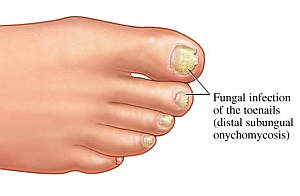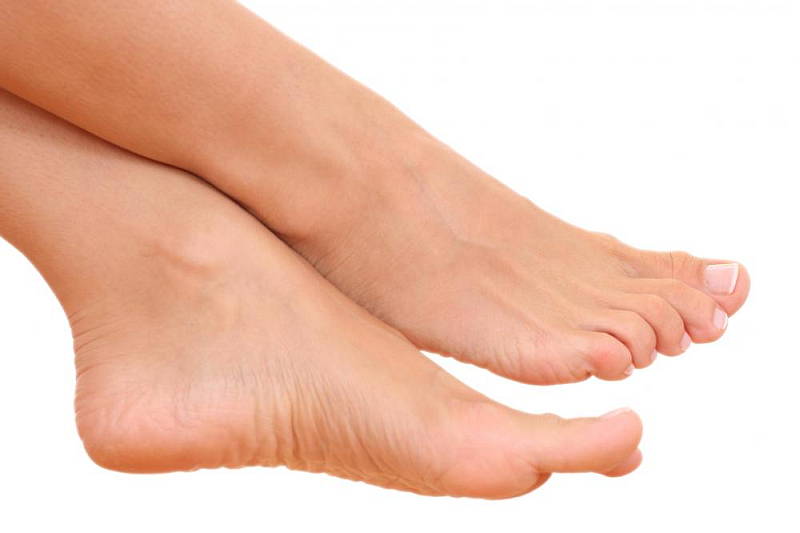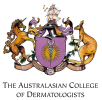Onychomycosis is a fungal infection affecting the nails. It is a chronic infection that affects as many as 3% of people at any one time. The nails are often thickened and have a yellowish discolouration. Toenails are more more commonly affected than fingernails and men are more likely to be affected than women. The infection can spread to the surrounding skin. Inversely, a skin tinea infection may spread to involve the nails. Tinea can be quite difficult to treat and it can readily recur.
Causes
A group of fungi called dermatophytes cause over 90% of all cases of onychomycosis. Trichophyton rubrum is the species which causes the most cases of onychomycosis. Trichophyton interdigitale and mentagrophytes are a less common cause. Yeasts, such as Candida albicans and moulds and can be found as a cause, or a contaminant, in onychomycosis. These organisms may produce a black/green discolouration of the nails.
Risk Factors
There are a number of risk factors which increase the likelihood of developing onychomycosis. These include:
- Compromised immune system – for example in diseases such as HIV, diabetes and people who are on immune suppressing medications (e.g. following an organ transplant)
- Using communal showers – wearing shoes in communal showers at swimming pools and caravan parks can help to prevent the infection
- Swimming
- Co-morbid tinea pedis
- Family members/housemates who have the infection
- Trauma to the nail
- Constant hand washing
- Warm and humid conditions – these help the causative fungi to grow
- Exercise – shoes and socks become hot and sweaty, which favours the growth of fungi. In addition, there can be minor trauma to the nails which can introduce the fungi into the nails; especially if the shoes worn are too tight
Appearance
Initially, onychomycosis may start with a white, yellow or brown discolouration in a corner of the nail. This may eventually spread to affect the whole nail as well as the cuticle. In other cases of onychomycosis, there may be white spots on the nail which may also spread to affect the entire nail.
The main subtypes of onycohmycosis are:
- Distal and lateral onychomycosis – just the ends and sides of the nail are involved in this early form of the infection
- Total dystrophic onychomycosis – most of the nail is involved
- Proximal subungual onychomycosis – tends to occur in patients who are immunosuppressed; the base of the nail is commonly colonised by candida
- Superficial white onychomycosis – where the surface of the nail plate is initially involved
Onychomycosis commonly to affects more than one nail. In people who are taking immune suppression medication or have a poorly functioning immune system, it is not uncommon for both the fingernails and toenails to be affected at the same time.
Diagnosis

Onychomycosis may be diagnosed based on the appearance of the nail in combination with laboratory tests. A scraping of the nail bed and nail clippings are often taken and then sent to the lab to be viewed under a microscope. The samples are then cultured on a special medium to identify the type of organism involved.
Treatment
Onychomycosis is a tricky infection to treat and may not respond well to therapy. Creams and ointments are not very effective in treating the infection because these cannot readily penetrate through the nail to the nail bed. However, the creams may be helpful if the nail folds or only the surface of the nails are affected. In people who are also suffering from tinea pedis, it is also important to treat the foot tinea as well as onychomycosis.
Oral medications need to be used for a minimum of 3 months and will cure nail infection in 60-70% of cases. The medications used are anti-fungals, such as terbinafine, itraconazole and fluconazole. These are newer agents which are more effective than older treatments and have fewer side effects. Griseofulvin is a more old-fashioned antifungal agent which needs to be taken for a longer period of time.
Surgical removal of part, or all of the entire infected nail is another treatment option. The nail can also be removed by chemical means using a urea ointment. Laser treatments are also sometimes used on the nails. Adopting a combined approach with topical and oral medications and laser/surgical treatment can improve outcomes.
If you have any questions or concerns about onychomycosis contact your local doctor, who will arrange for you to see a dermatologist. Contact us today.



